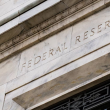by Kathy Jones, Global Fixed Income Strategist, Charles Schwab & Company
A "soft landing," with declining inflation but positive growth, would be ideal. However, turbulence appears likely. Here's how to handle it.
In keeping with the aviation theme, the debate brings to mind a saying among pilots: "Any landing you walk away from is a good landing." In other words, if you can survive the landing intact and without injury, you've succeeded. We see that as a worthwhile perspective for investors. It's more important to survive the landing than to guess its force.
Risk of a hard landing is rising
Not surprisingly, expectations for where the federal funds rate will peak continue to rise. The market is currently pricing in the potential for the rate to go as high as 5.25% to 5.5% this year—up 50 basis points (or 0.50%) in the past month alone. Some Federal Reserve officials have even indicated that short-term rates may need to rise to 6% to slow economic growth and cool inflation. That is likely a "hard landing" scenario.
Expected path of the federal funds rate compared to a month ago

Source: Bloomberg
Market estimate of the federal funds rate using Fed Funds Futures Implied Rate (FFM2 COMB Comdty). As of 2/1/2023 and 3/1/2023, respectively.
How hard will the Fed hit the brakes?
In our view, the most likely outcome is another 25-basis-point hike in the target range for the federal funds rate, bringing it to 4.75% to 5.0%. Having just reduced the size of its rate hikes in January, we doubt the Fed will want to shift gears again so soon. However, the median estimate for the peak fed funds rate—often referred to as the terminal rate—could rise as the Fed assesses how much more tightening is needed to slow inflation.
Nonetheless, because changes in monetary policy can take a long time to affect inflation, it makes sense for the Fed to slow down the pace of rate hikes after a year of aggressive tightening. Moreover, there are signs that policy is already "restrictive"—tight enough to slow economic growth and reduce inflation.
Here's what we're seeing on the horizon
1. Inverted yield curves
The spread between two-year and 10-year Treasury yields has fallen to nearly minus-90 basis points, the deepest inversion since the 1980s. In the past, an inverted yield curve has been a reliable indicator of recession within 12 to 18 months. However, the severity of a recession has varied and hasn't correlated to the depth of the inversion.
The yield spread between 2-year and 10-year Treasuries is deeply inverted

Source: Bloomberg. Market Matrix US Sell 2 Year & Buy 10 Year Bond Yield Spread (USCY2Y10 INDEX). Daily data as of 3/1/2023.
The rates are composed of Market Matrix U.S. Generic spread rates (USYC2Y10). This spread is a calculated Bloomberg yield spread that replicates selling the current 2 year U.S. Treasury Note and buying the current 10 year U.S. Treasury Note, then factoring the differences by 100. Gray bars indicate past recessions.
Even the Fed's preferred yield curve indicators—the "forward curve," or the spread between current three-month yields today and the implied yield on three-month yields a year and a half from now—is pointing to a rising risk of recession. At 4.6%, it is the highest since 2007.
The "forward curve" is suggesting a rising risk of recession

Source: Bloomberg. USD OIS FWD swap 18M3M (G0025 18M3M BLC2 Curncy). Daily data as of 3/1/2023.
Gray bars indicate past recessions. A vanilla interest rate swap is an agreement between two counterparties to exchange cash flows (fixed vs floating) in the same currency.
2. Tightening lending standards
Commercial and industrial (C&I) loan standards have tightened

Source: Bloomberg. Quarterly data as of January 2023.
Federal Reserve's Senior Loan Officer Survey: Net Percent of Domestic Respondents Tightening Standards for Commercial & Industrial Loans for Large/Medium Sized Firms and Small Firms (SLDETIGT Index, SLDETIGTS Index.
Consumer loan standards also have tightened

Source: Federal Reserve's Senior Loan Officer Survey: Quarterly data as of January 2023.
Net Percentage of Domestic Respondents Reporting Tightening Standards for Consumer Loans (STDSOTHCONS, DRTSCLCC, STDSAUTO).
Demand for C&I loans has declined

Source: Federal Reserve's Senior Loan Officer Survey: Quarterly data as of January 2023.
Net Percentage of Domestic Respondents Reporting Stronger Demand for Commercial and Industrial Loans for Large/Medium Sized Firms and Small Firms (DRSDCLIM, DRSDCIS).
3. Real yields have moved up sharply
Real yields have risen sharply

Source: Bloomberg. US Generic Govt TII 2 Yr (USGGT02Y INDEX), US Generic Govt TII 5 Yr (USGGT05Y INDEX).Daily data as of 2/28/2023.
Past performance is no guarantee of future results.
A good landing
The goal should be to walk away from the landing—whatever form it takes—without significant losses or declines in portfolio values. We suggest focusing on bonds high in credit quality, such as Treasuries and investment-grade corporate or municipal bonds, while gradually adding to duration until it reaches your benchmark level. Duration refers to the sensitivity of a bond's price to changes in interest rates. In general, short-term bonds have lower durations than long-term bonds. A common benchmark duration tracked by fixed income investors is the Bloomberg Barclays Aggregate Bond Index. Its duration is currently about 6.2 years. For investors who are more risk-averse and holding a significant amount of fixed income in very short-term maturities, we suggest moving out to at least two- to three-year maturities to avoid reinvestment risk—that is, the risk of being forced to reinvest at a lower yield while yields are dropping. In past cycles, when the peak in rates has been reached, yields have tended to fall quickly as the market adjusts its expectations for the path of Fed policy and inflation.
Overall, whether it's a hard or soft landing, yields are likely to decline. In the meantime, we would be prepared for a bumpy ride.
















